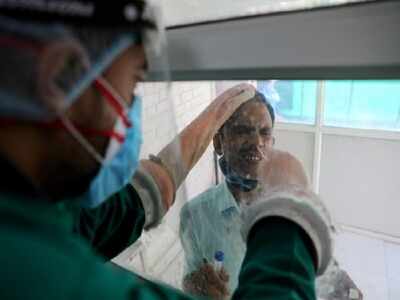Maharashtra Covid lockdown news live: Week-long strict lockdown in Baramati from today
A state-wide mortality comparison by the public health department between the first and second Covid waves in Maharashtra has revealed that twice the number of men as compared to women lost their lives to the contagion. Of the total mortalities till January 2021 in the state, 30% were women and 70% men. During the current upsurge in Covid cases, which began around the start of February this year, the analysis showed that 28% of the mortalities were women till March 15 and 72% were men. Stay with TOI for all updates

Hotspots down in civic limits, up in rural areas
The Pune and Pimpri Chinchwad municipal corporations have reported a drop in the number of micro-containment zones in their respective limits, mostly due to the decline in fresh Covid-19 cases and an increase in recoveries over the past two weeks. In contrast, the number of Covid-19 hotspots has gone up from 399 to 453 in just one week in the rural areas, which include 13 tehsils and 14 municipal councils. Around mid-April, PMC limits had 497 micro-containment zones. Now, the number stands at 254. Similarly, the neighbouring PCMC had 3,000 hotspots in mid-April, which has dipped to 2,171this week. Health officials from both the civic bodies said stricter restrictions have helped curb the spread of the contagion and caused a 45% dip in containment zones in PMC limits and a 30% dip in PCMC limits.
Curbs hit production, employment in dist
Lockdown-like restrictions imposed over the course of April have severely affected production and employment in Pune region, as according to the latest monthly survey by the Mahratta Chamber of Commerce, Industry, and Agriculture (MCCIA). Compared to March, several companies have revised their timelines — for a return to pre-Covid levels of production and employment — to three to six months or more. The micro, small, and medium-scale enterprises (MSMEs), which form the bulk of the industrial belt in the region, bore the brunt of the dip in industrial activity.
PMC to produce additional oxygen
The Pune Municipal Corporation (PMC) has set up an oxygen plant at Dalvi hospital. The plant is expected to start supply of oxygen by this weekend. The tests were carried out on Tuesday. According to PMC officials, the civic body is inching towards self-reliance when it comes to supply of oxygen to civic hospitals. Around 380 tonnes of medical oxygen are consumed every day in Pune Metropolitan Region out of which around 250 tonnes are used in PMC areas. The civic hospitals use around 45 tonnes, while the remaining 200 tonnes go to private hospitals.
From 90 tonnes in Jan, O2 demand up to 600 tonnes
The demand for oxygen in the Pune division has increased by 500 tonnes than what was in January following the increase in Covid-19 cases. The divison comprises Pune, Sangli, Satara, Solapur and Kolhapur districts. In the present scenario, the demand for oxygen in the division is close to 608 tonnes as against the supply of 516 tonnes, a Pune divisional office report has revealed. The demand for oxygen in Pune division was 90 tonnes in January, The maximum demand for oxygen is in Pune district, 420 tonnes. Sangli, Satara, Solapur and Kolhapur districts have demand less than 55 tonne for oxygen supply.
Some hospitals gear up to become self-reliant to tide over O2 shortage
Some small and medium-sized hospitals in the city are gearing up to become self-reliant by setting up oxygen generation plants on their premises in the wake of the unprecedented crisis of the life-saving gas in PMR. “Unlike big hospitals, small and medium-sized health hubs depend mainly on the daily supply of oxygen cylinders from outside. A sizeable number of them are now setting up a plant that separates gases from a mixture in the atmosphere to generate concentrated oxygen that can be supplied to hospital beds through a pipeline, negating the need to buy pressurized liquid oxygen from outside sources like distributors and refillers," said Sanjay Patil, chairman of the Indian Medical Association's Hospital Board of India.
Week-long strict lockdown in Baramati from today
The Baramati tehsil administration will impose a strict lockdown in the town and 94 gram panchayats under it from May 5-11 to contain the spread of Covid-19. Incident commander Dadasaheb Kamble issued three separate orders for the town, industries and rural areas. “Deputy CM and district guardian minister Ajit Pawar had told the tehsil administration to take the decision in the Covid review meeting held on Saturday,” Kamble said. He said Covid-19 cases were increasing at an alarming rate in the tehsil and a strict lockdown was the only option to control the situation. “Almost the entire Baramati town is marked as a containment zones as most of its areas fall in the 19 wards that have active Covid-19 cases. Unless we impose strict lockdown, the cases will not reduce,” Kamble said.